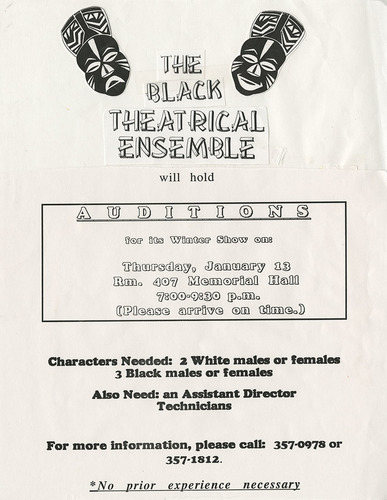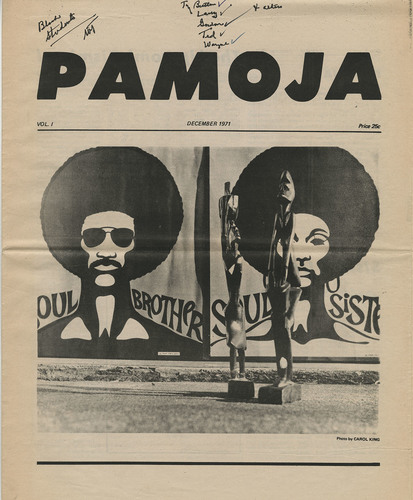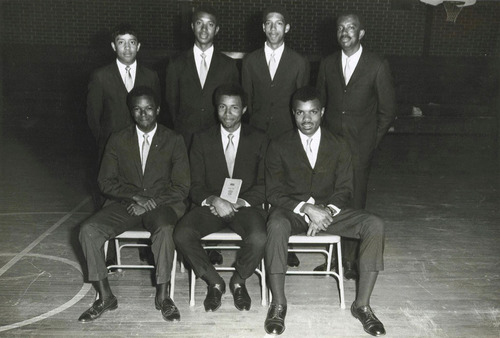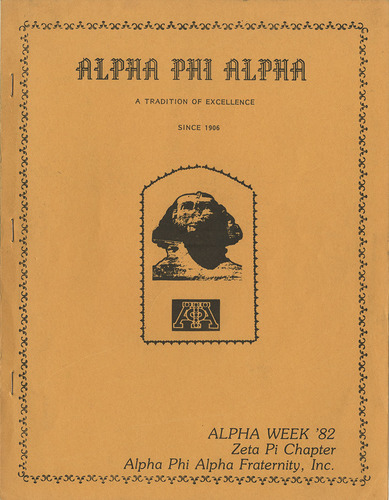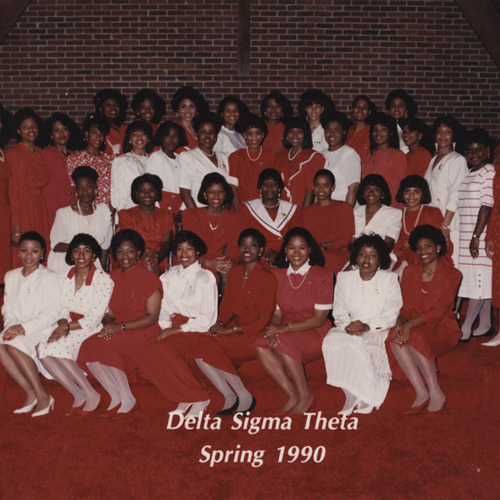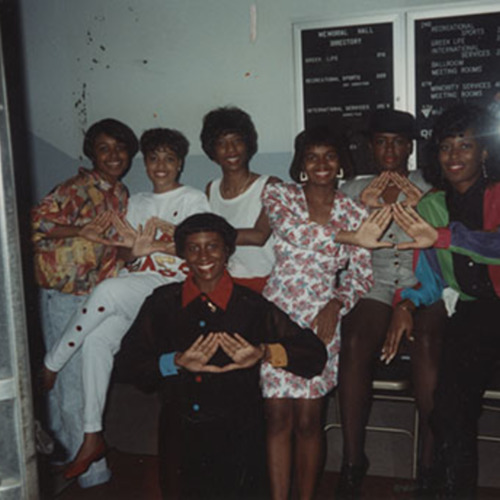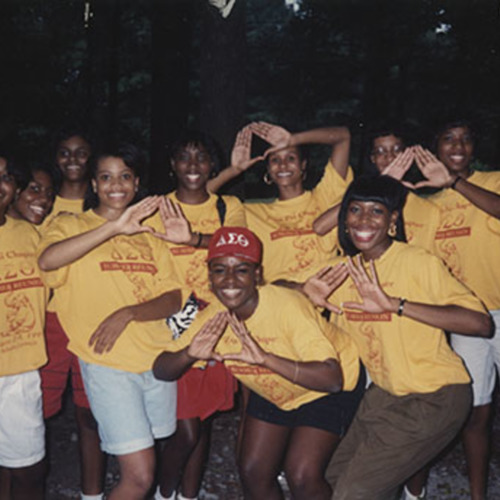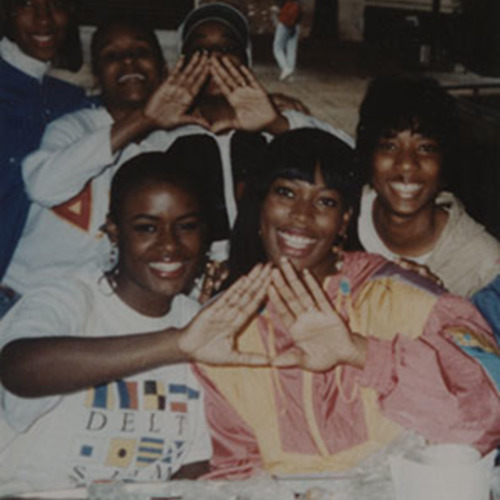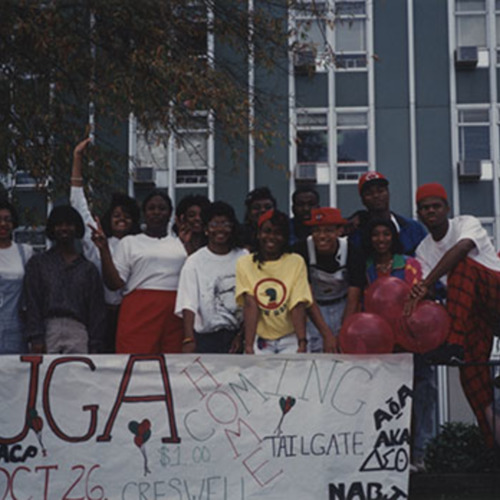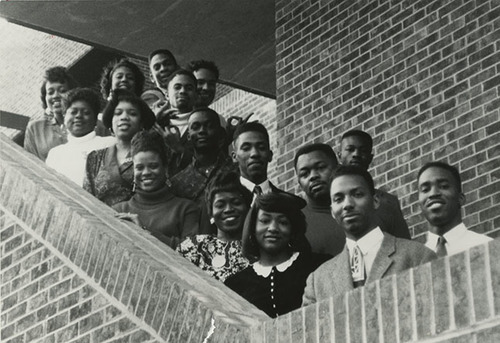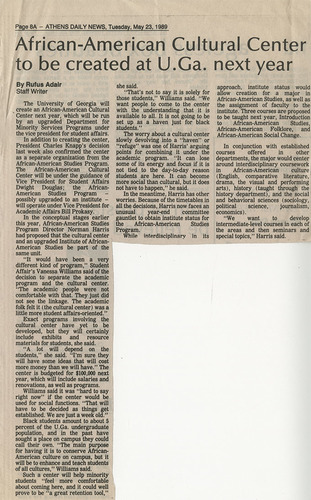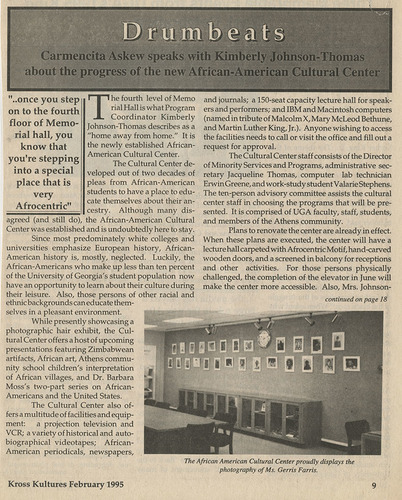New Groups, New Spaces
The founding of BSU served as the catalyst for the creation of other groups for Black students at UGA, expanding social outlets and opening new opportunities for sharing Black culture on campus.
Other Early Student Groups
In October 1970, Nawanna Lewis started a group called Pamoja. Named for the Swahili word meaning “together” or “one” the group was intended to provide a space where African American students could find culture and belonging on campus. What began as Miller performing alone in front of Memorial Hall in artfully draped sheets, evolved into the Pomoja Dancers, the Pamoja Singers, and Pomoja Drama and Arts. Miller also produced the first newspaper for African Americans on campus, and started the Journalism Association for Minorities. The Pamoja Singers ultimately transformed into the African American Choral Ensemble, still performing today under the direction of Dr. Gregory Broughton.
Established in 1969, the Zeta Pi chapter of Alpha Phi Alpha was the first Black fraternity at the University of Georgia, founded by seven members known as the Pearls: Alonzo Wilson, Michael Stover, Russell Williams, Eddie Cheeks, Richard Morgan, Alan Jackson, and Bennie Roberson. The group came together with help and support from members of an Alpha alumni chapter in Athens. The Zeta Pi chapter has a prominent alumni network of firsts at UGA — among them the first Black president and vice president of the Student Government Association (SGA), editor of The Red & Black, homecoming king and ROTC pilot, among others.
The Zeta Psi chapter of Delta Sigma Theta, also founded in 1969, was the first Black sorority at the University of Georgia, started by eight members known as “The Great Eight”: Carolyn Baylor Reed, Helen Butler, Carrie Gantt, Beverly Johnson Hood, Cheryl Walton Jordan, Barbara Atkinson Moss, Debra Bailey Poole and Bendel Love Rucker. The chapter hosts the annual Miss Black University of Georgia Pageant, which raises funds for the Kimberlee N. Chatmon Memorial Scholarship, and participates in other fundraising projects to support research and medical facilities.
Photographs, members of Zeta Psi chapter of Delta Sigma Theta, ca. 1980s.
Delta Sigma Theta, Zeta Psi Chapter Records, Hargrett Library
The National Pan-Hellenic Council (NPHC), commonly referred to as “The Divine 9,” is a group of historically Black fraternities and sororities. Today, the University of Georgia now has chapters for eight of the nine NPHC organizations, with membership in each growing every year.
Physical Space
In 1971, the BSU raised concerns about programming for Black Awareness Week and requested additional funding from the student union. The ensuing battle highlighted the lack of Black cultural programming on campus, and led to the idea for creating a Black cultural center. Critics suggested the center represented “separatism” and argued that Black students should fund it without broader university support. President Charles Knapp finally approved the creation of the center in 1989. It opened with space inside Memorial Hall in 1995.
In 2006, the cultural center along with the Office of Multicultural Services and the Office of Intercultural Affairs were combined into one department, the Office of Minority Services and Programs. As part of this administrative shift, the African American Cultural Center space was renamed Adinkra Hall and made available to any campus department or student organization for hosting meetings and programs. While this was an effort to show a unified, global perspective, the change drew attention away from specific Black student voices and issues.


